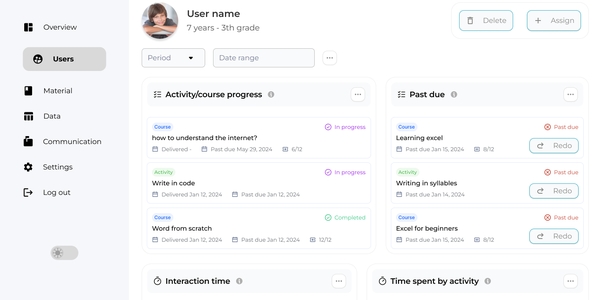In the realm of educational support, particularly for dyslexia intervention, the significance of data collection cannot be overstated. It plays a crucial role in early intervention, enabling a teaching and learning process tailored to the unique needs of students grappling with dyslexia. This process not only illuminates the path to better understanding but also guides educators, students, and parents towards more personalized and effective strategies for overcoming the challenges associated with dyslexia.
Understanding the Importance
For education professionals, the collection and analysis of data related to dyslexia intervention are indispensable. It offers a wealth of fundamental knowledge about how dyslexia affects learning and which strategies might be most beneficial for each individual student. The right software can help delineate the characteristics of dyslexia a student exhibits, providing a clearer picture of the intervention needed.
Three Pillars of Data in Dyslexia Intervention
The journey of dyslexia intervention is underpinned by three critical areas: progress monitoring, goal setting, and data analysis. Each plays a vital role in crafting a supportive educational experience that fosters growth and understanding.
- Progress Monitoring: At the heart of any dyslexia intervention program is progress monitoring. This continuous process involves tracking a student's advancement through intervention strategies, allowing for real-time adjustments and tailored support. It's not just about noting improvements; it's about understanding the learning journey in its entirety, recognizing both the victories and the hurdles.
- Goal Setting: Equally important is goal setting. This forward-looking process involves establishing clear, achievable objectives for students. These goals should be specific, measurable, and time-bound, offering students not just a target to aim for, but also milestones that celebrate their progress along the way. It's a collaborative effort, requiring input from educators, parents, and the students themselves, ensuring that goals are not only challenging but also inspiring and personally meaningful.
- Data Analysis: Lastly, data analysis stands as the pillar that supports informed decision-making. Through careful examination of the data collected from progress monitoring and goal setting, educators can identify patterns, adapt strategies, and even predict future challenges. This analysis is not merely statistical; it's a deep dive into the individual learning experiences of students, offering insights that are both broad and deeply personal.
The Impact of Data-Driven Intervention
Implementing a data-driven approach to dyslexia intervention has far-reaching benefits. It empowers educators to craft interventions that are both effective and empathetic, aligning with the unique needs of each student. For students, it translates to a learning experience that is not defined by their dyslexia but enriched by understanding and support tailored to their specific needs. Parents, too, gain a clearer understanding of their child's learning journey, enabling them to provide the right support at home.
Conclusion
The role of data in dyslexia intervention is transformative. It bridges the gap between standardized education and the nuanced needs of students with dyslexia. By focusing on progress monitoring, goal setting, and data analysis, educators can unlock a world of potential for students, guiding them towards success that is both meaningful and measurable. In the journey of learning with dyslexia, data is not just a tool; it's a compass that leads to a brighter future.













